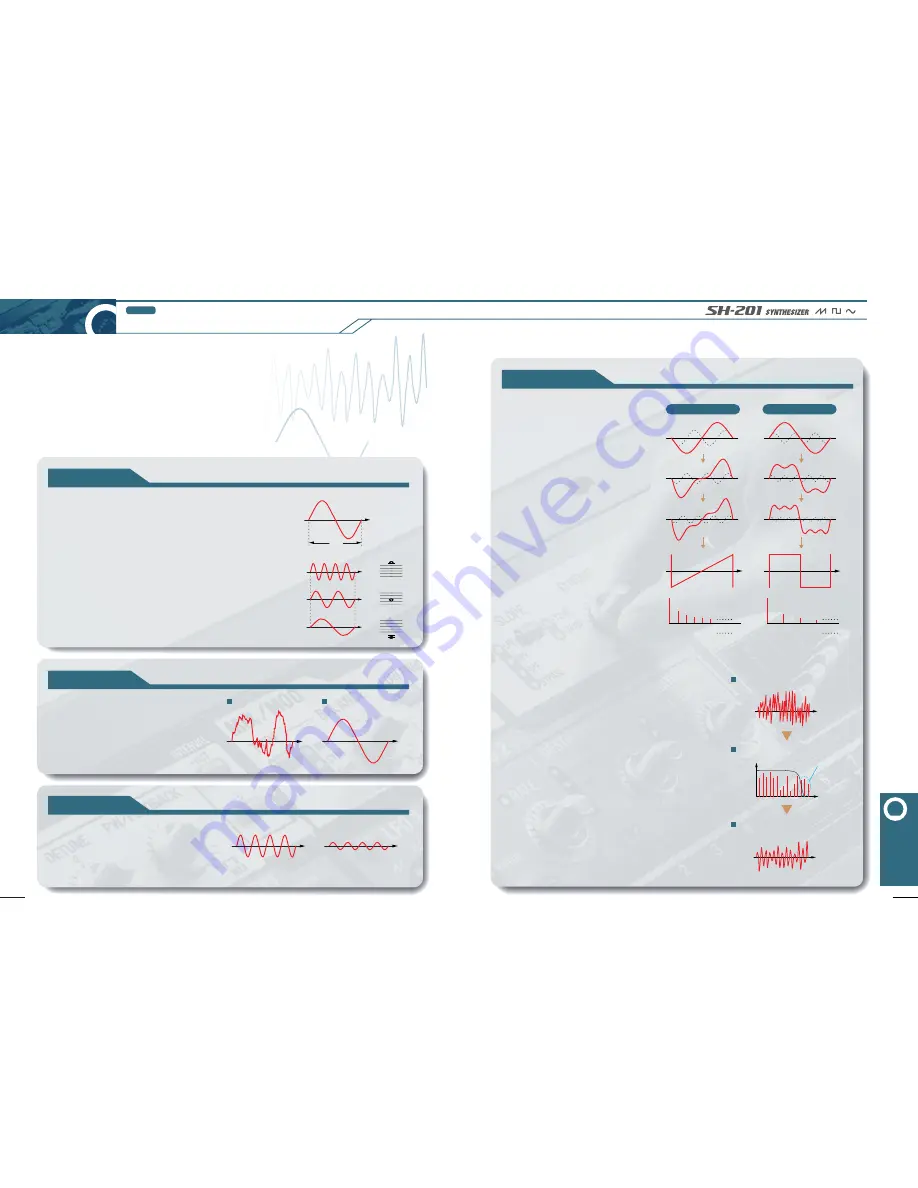
We’ve just talked about the brightness
of sounds, and how they are determined
by the shape of their waveforms.
But how are these waveforms
constructed? It is commonly known
that waveforms are composed
of a combination of sine waves.
Let’s take the sawtooth or the square
wave for example; they are comprised
of a sound basis and additional sine
waves that are the integer multiples
as in two times or three times
the frequency (called harmonics,
or overtones). There are two kinds
of harmonics. One has the frequencies
of integer multiples in two times or three
times; the other has other frequencies
that are non-integer multiples.
By combining these harmonics,
various sounds can be created.
Brighter sounds include many high frequency harmonics;
darker (rounder) include more of the low frequency
harmonics. There is a technique called subtractive synthesis
method in which harmonic elements are cut to change
the brightness (waveform) of the sound. It is a popular
method for creating composite waveforms. The SH-201 has
waveforms with built-in harmonics. These waveforms
with harmonics components are rejected through the filter
to change the brightness of the sound.
The pitch of sound is determined by the speed of the wave
cycles. A wave that vibrates 1 cycle per second is called
1 Hz (hertz). As the frequencies become higher, Hz
becomes higher in numbers. Lower the number in hertz,
and frequencies will become lower as well. For example,
when A4 (center A) equals 440.0 Hz, an octave higher pitch
would generate twice the amount of frequency
at 880.0 Hz (A5). An octave lower pitch would produce
half the frequency at 220.0 Hz (A3).
Pitch
Harmonics
Volume
The volume of the sound is determined by the size
or the width of the waves. As the waves become
wider (vertically on the graph), the louder
the volume becomes. As the width narrows,
the volume becomes softer.
Sounds are waves that vibrate through the air. These waves
eventually reach our ears, and we would recognize them
as sounds. The shape of the wave determines its sound.
In concept, sounds are composed of three elements: pitch,
volume, and brightness.
Sawtooth Wave
Square Wave
Brightness
The brightness of a sound is determined
by the shape of its waveform. By comparing
the piano and the square wave side by side,
you can see the difference in complexity.
In this example, the complexity of the waveform
results in a brighter sound.
1Hz sound wave
1sec
time
A5 (=880Hz)
A4 (=440Hz)
A3 (=220Hz)
time
time
time
time
time
time
“clang”
time
“poooh”
Piano waveform (complex)
time
Loud sound
time
Soft sound
Sine waveform (smooth)
Bright waveform
Low pass filter
Higher partials are cut, making
the waveform more rounded (mellow)
fundamental
2nd
partial
3rd
partial
4th
partial
5th
partial
6th
partial
fundamental
2nd
partial
3rd
partial
4th
partial
5th
partial
6th
partial
7th
partial
partials
partials
time
time
frequency
partials which are cut
level
6
Chapter
The Three Elements of Sound
Appendix
23
24
6
Chapter
The Three
Elements of Sound
Appendix















